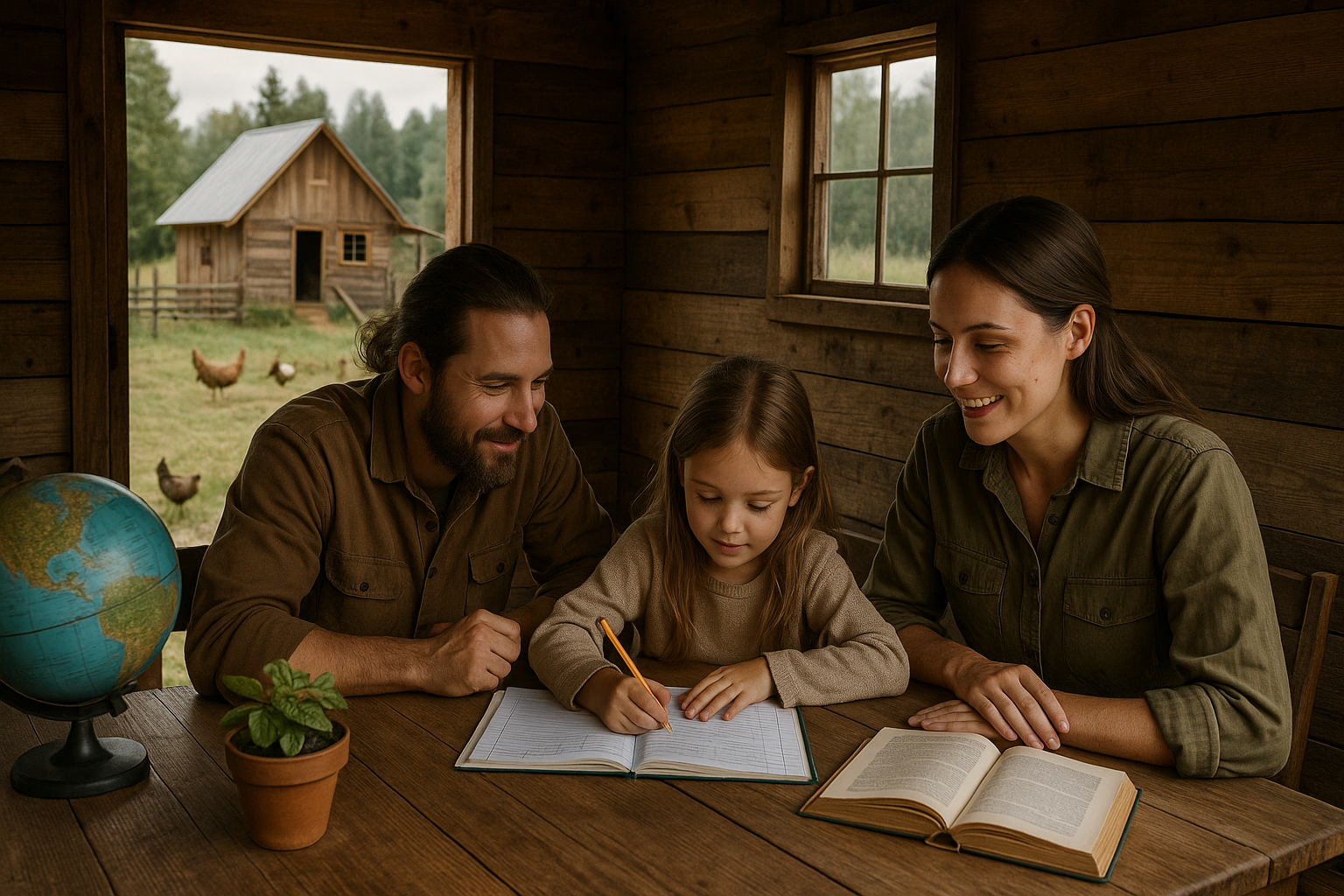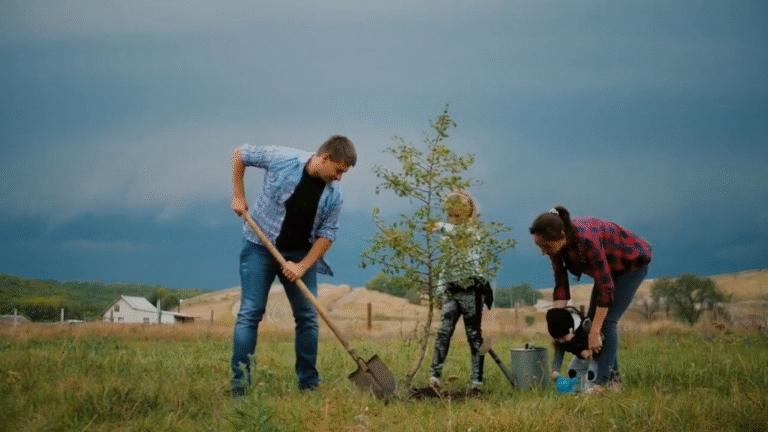Homeschooling on the Homestead: Balancing Education and Farm Life
Living on a homestead offers a unique lifestyle—fresh air, homegrown food, and a deep connection to the land. But if you’re a homesteading parent, you might be wondering how to fit education into the mix. Between tending to crops, caring for animals, and maintaining an off-grid setup, finding time for schooling can feel like a challenge.

That’s where homeschooling comes in. It’s flexible, hands-on, and perfectly suited for the homesteading life. I’ve seen families thrive by blending education with farm tasks, and I’m here to share how you can make it work for your crew. Let’s dive into some practical ways to balance homeschooling with homestead duties while keeping your kids engaged and learning.
Why Homeschooling Fits Homesteading
Homeschooling and homesteading go hand in hand because both are about self-reliance and customization. On a homestead, you’re already teaching your kids valuable skills—gardening, animal husbandry, or even basic carpentry. Homeschooling lets you formalize that learning while tailoring it to your family’s values and schedule. You’re not tied to a traditional school calendar, so if the goats need milking or the tomatoes need harvesting, you can adjust your day. Plus, the homestead itself becomes a living classroom. Math lessons can involve measuring garden beds, while science comes alive through observing plant growth or animal behavior.
One of the best parts? You get to focus on what matters to your family. If sustainability is your priority, you can weave it into every subject—think history lessons about traditional farming methods or biology projects on composting. Events like the OSR Homesteading Festival in Utah often have workshops on homeschooling, where you can connect with other parents and swap ideas for integrating farm life into education.
Step 1: Create a Flexible Schedule
The key to balancing homeschooling with homestead life is flexibility. Unlike a traditional school day, your schedule can bend to the rhythm of the farm. Mornings might be best for hands-on homestead tasks when everyone’s energy is high—think feeding chickens or weeding the garden. Save academic work like reading or math for the afternoon when you’re inside cooling off. On busier days, like during planting or harvest season, scale back formal lessons and lean into experiential learning. For example, let the kids calculate how many seeds to plant per row or write a journal entry about the day’s work.
A loose weekly plan works better than a rigid daily one. Aim for a mix of core subjects (math, reading, science) and homestead activities. If you’re new to homeschooling, start with just 2–3 hours of focused academics a day—kids often learn faster in a one-on-one setting. The rest of the time can be spent on practical skills. And don’t stress about perfection; the beauty of homeschooling is that you can adapt as you go.
Step 2: Turn the Homestead into a Classroom
Your homestead is a goldmine for hands-on learning. Instead of textbooks, use the land to teach real-world skills. Here are a few ideas to get you started:
- Math: Measure the area of your garden plots to calculate how much compost you’ll need. Older kids can track expenses for feed or seeds to practice budgeting.
- Science: Study soil health by testing pH levels or observe the life cycle of chickens from egg to adulthood. Set up a weather station to track rainfall and temperature.
- History and Culture: Research the history of homesteading in your area or explore traditional preservation methods like canning, tying it to lessons about past generations.
- Writing: Have the kids keep a homestead journal, documenting daily tasks or writing stories inspired by the land. Younger kids can draw pictures to go with their entries.
The goal is to make learning feel natural, not forced. If you’re out fixing a fence, talk about the physics of leverage. If you’re baking bread, discuss the chemistry of yeast. Kids soak up knowledge when it’s tied to what they’re doing.
Step 3: Involve Kids in Homestead Tasks
One of the biggest perks of homeschooling on a homestead is that your kids can contribute to daily work while learning responsibility. Assign age-appropriate chores that double as lessons. A 5-year-old can collect eggs, practicing counting as they go. A 10-year-old can help plant seeds, learning about spacing and soil depth. Teens might take on bigger projects, like building a compost bin, which teaches problem-solving and teamwork.
Involving kids also frees up your time for other tasks. While they’re feeding the rabbits, you can prep dinner or plan the next day’s lessons. It’s a win-win: they gain skills, and you get a bit of breathing room. Just be patient—kids might work slower or make mistakes, but that’s part of the learning process.
Step 4: Build a Support Network
Homeschooling can feel isolating, especially on a rural homestead where neighbors might be miles away. Connecting with other homeschooling families can provide support and fresh ideas. Look for local co-ops where kids can socialize and learn together—some even offer classes like art or music that you might not have time to teach. Online communities are another great resource; forums and social media groups for homeschooling homesteaders are full of tips and encouragement.
If you’re looking for in-person inspiration, festivals like the OSR Homesteading Festival often host homeschooling workshops. They’re a great way to meet other parents who are balancing education with farm life and to pick up new strategies for keeping your kids engaged.
Step 5: Prioritize Downtime and Fun
Homesteading and homeschooling are both demanding, so don’t forget to carve out time for fun. Kids need breaks to recharge, and so do you. Set aside moments for unstructured play—let them explore the woods, build a fort, or just run around with the dogs. These activities foster creativity and reduce burnout. You can also tie in fun homestead projects, like making homemade soap or crafting birdhouses, that feel more like play than work.
As a parent, give yourself grace. Some days, the cows will escape, or a storm will derail your plans. That’s okay. The beauty of homeschooling is that you can pick up where you left off. Your kids are learning resilience and adaptability—skills just as important as any academic subject.
Final Thoughts
Homeschooling on a homestead isn’t just doable—it’s a chance to create a rich, meaningful education for your kids. By blending farm life with learning, you’re giving them practical skills, a love for the land, and the freedom to grow at their own pace. Start with a flexible schedule, use your homestead as a classroom, and don’t be afraid to lean on your community for support. You’ve got this! And if you’re ever looking for more ideas, events like the OSR Homesteading Festival are a great place to connect with other homesteaders who are making it work.


